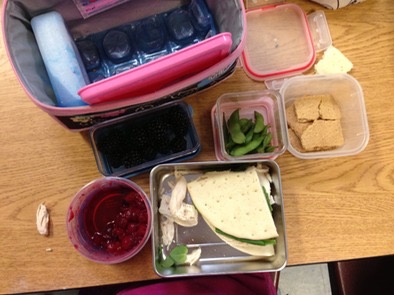
WHAT IS “GROWING FOOD”?
 At the Seed we use the phrase “growing food” to describe food that is healthy for us. It’s the food that will build our muscles, keep us from getting sick, keep our teeth from getting cavities, and help our eyes see even better. It’s the food that makes us have happy energy and gives our brains focus.
At the Seed we use the phrase “growing food” to describe food that is healthy for us. It’s the food that will build our muscles, keep us from getting sick, keep our teeth from getting cavities, and help our eyes see even better. It’s the food that makes us have happy energy and gives our brains focus.
The Access to Healthy Food Coalition defines healthy food this way:
“A healthy food is a plant or animal product that provides essential nutrients and energy to sustain growth, health and life while satiating hunger. Healthy foods are usually fresh or minimally processed foods, naturally dense in nutrients, that when eaten in moderation and in combination with other foods, sustain growth, repair and maintain vital processes, promote longevity, reduce disease, and strengthen and maintain the body and its functions.
Healthy foods do not contain ingredients that contribute to disease or impede recovery when consumed at normal levels.”
THE SEED FOOD POLICY
 While expectations for lunch/snack times differ throughout grade levels, every class adheres to the following guidelines in order to encourage healthy eating habits:
While expectations for lunch/snack times differ throughout grade levels, every class adheres to the following guidelines in order to encourage healthy eating habits:
- Children will have access to all food items in their lunch boxes (with the exception of candy or soda, which will be put in mailboxes to be taken home). By preparing the meal, parents are setting healthy limits for their children. By allowing children to make their own choices within those limits, students are building healthy attitudes about food.
- Children will be allowed to eat food items in any order and in any amount. Parents are encouraged to remember this when packing desserts.
- Children will be exposed to a variety of healthy foods through the Seed food curriculum. (See “Eating like a Dinosaur”) Exposure includes any experience using any of the five senses and does not require consumption of a particular food.
- Teachers will honor students words in relation to food: when children say they are hungry or full, they will be given the chance to continue eating or stop.
- Teachers will not force children to eat.
- Children will be given at least 20 minutes to participate in snack during the morning, and at least 30 minutes for lunch. After school snacks will be served at 3:30, allowing children at least 20 minutes to finish eating. In each instance, students will be given a 5 minute warning before clean-up.
- Teachers will encourage appropriate meal time behavior and social interaction.
PORTION SIZE
 On of the biggest challenges teachers face is when children have too much food in their lunches and parents expect their child to eat the whole lunch. Sarah Hampl, M. D., a pediatrician and childhood obesity expert, makes this recommendation:
On of the biggest challenges teachers face is when children have too much food in their lunches and parents expect their child to eat the whole lunch. Sarah Hampl, M. D., a pediatrician and childhood obesity expert, makes this recommendation:
“The answer is right in your child’s hand: a child-size portion of meat is about what would fit in your guy’s palm. For whole-grain carbs, such as brown rice or pasta, a serving is roughly the size of his fist–a measurement that also applies to fruits, veggies, and dairy products such as yogurt. A serving of cheese is about thumb-size, and for munching on snack foods, think a handful. The great thing about this system is that it works no matter what your child’s age — because his hand grows as he, and his appetite, does. So you don’t have to memorize portions,” Dr. Hampl notes.
source: http://m.parenting.com/article/portion-control-for-kids#bmb=1
STUDENTS WITH SPECIAL NEEDS
While we make specific nutritional guidelines and recommendations, we also understand that certain students have dietary needs that might require they eat foods not necessarily included in our guidelines. Food sensitivities, texture reactions, and allergies might be a few situations that fall in this category.
